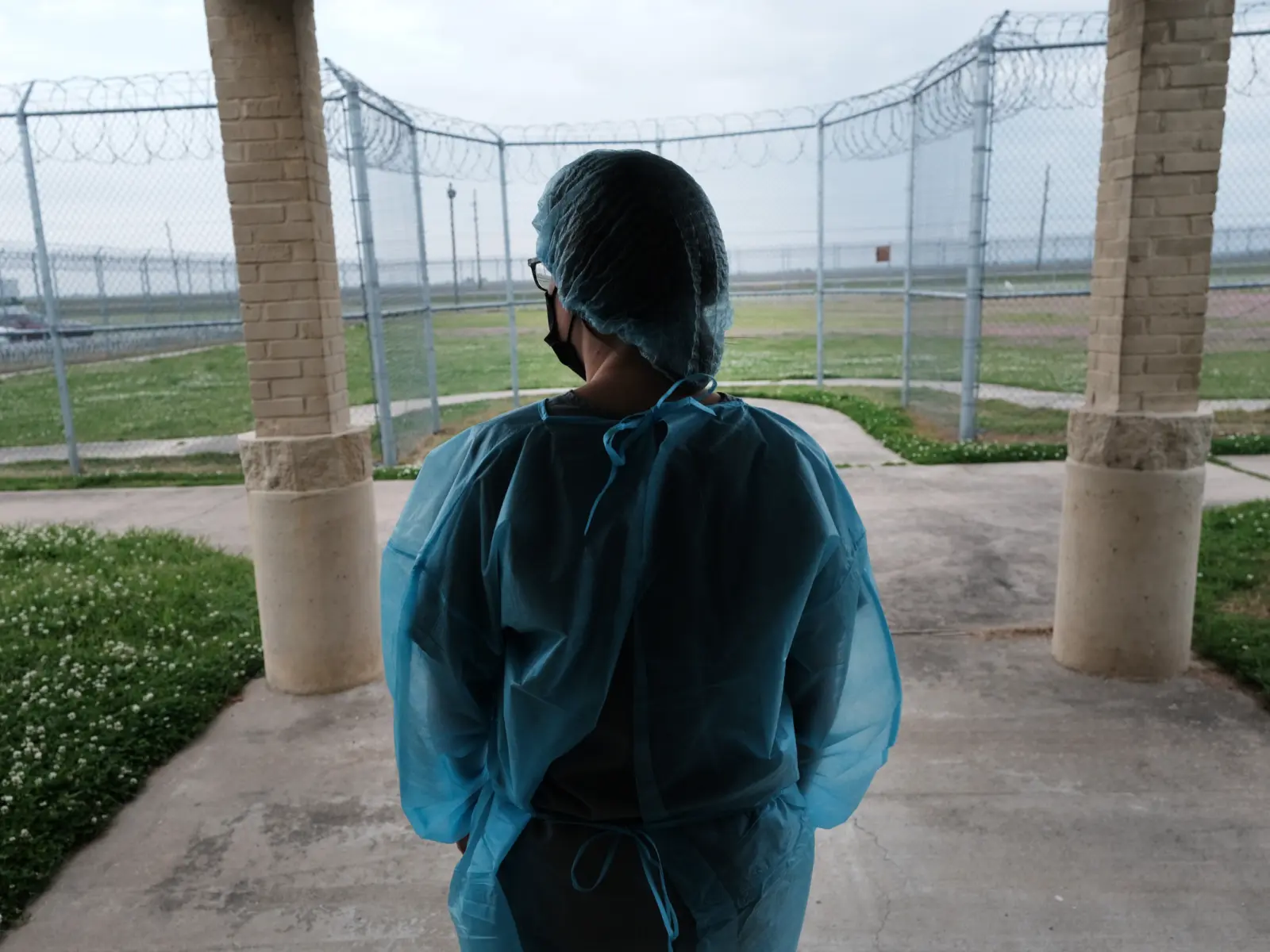Over the past five years, the National Collaborative on Gun Violence Research (NCGVR) has started to develop important evidence on the effects of gun violence and gun policies in the United States. This research is critical because more than 40,000 people are killed by guns in the United States each year and an additional 75,000 are injured. By any measure, firearm injuries and deaths are a leading public health crisis of our time.
Meanwhile, the legal and political landscape around gun policy has become more uncertain. In 2022, the Supreme Court’s Bruen decision established a new standard for evaluating the constitutionality of gun laws based on historical tradition and analysis. While the decision puts a new emphasis on legal scholarship, it does not change the need for greater investment into research and data collection in order to learn which gun policies are backed by science as being able to reduce deaths and injuries.
Yet, the federal government has devoted little funding to understanding gun violence. As a result, Americans know surprisingly little about gun ownership and use — and even less about what we can do to prevent the bloodshed.
“For over 20 years, the federal government has failed to properly fund research on gun violence,” says Asheley Van Ness, director of criminal justice at Arnold Ventures (AV). “Two decades of underfunding has left research on gun violence prevention far behind research on other causes of death in the United States, even as concerns about gun violence have risen in recent years.”
Lawmakers in Congress stopped providing funding to study gun violence in 1996 with the passage of the Dickey Amendment, a provision that prohibited the Centers for Disease Control and Prevention from using its budget to advocate for gun control. That measure, widely interpreted as a ban on research funding, put gun violence scholarship on ice for more than 20 years. Despite a recent renewal in congressional funding for firearm research, the dearth of data has allowed political rhetoric to fill the void and, inadvertently, stifle effective policy.
Seeing this ongoing gap in research, AV helped launch NCGVR in 2018. The project devoted over $20 million to building the evidence base on gun violence and the policies most effective at improving community safety in the United States. Five years in, the effort has started to shed light on the scope and scale of gun violence as well as effective ways to address it.
“Momentum has built up over the past few years to expand the field,” Van Ness says. “Now the federal government is thinking seriously about ways to invest in this important topic.”
Developing a “shared set of facts”
AV has long devoted support to creating research and evidence-based policy, with a goal of helping the government better carry out its responsibilities, especially where public safety is concerned. Given that gun violence is both one of the most pressing and most under-studied social, economic, and political challenges facing the United States, it is a natural fit for AV.
“At Arnold Ventures, we use our resources to confront some of the most pressing problems facing our nation,” AV President and CEO Kelli Rhee says. “Five years ago, we, like many others, recognized that our understanding of gun violence was suffering from a severe lack of investment in research, and we joined together with our partners to try and fill some of the gap. While more investment from both public and private entities is undoubtedly needed, the National Collaborative on Gun Violence Research has made significant progress in building the gun policy evidence base.”
The RAND Corporation administers NCGVR, soliciting rigorous, independent research proposals focused on firearms and firearm violence prevention. AV selected RAND because of the organization’s deep technical knowledge of gun-policy science, its reputation for objectivity and independence, and the success of its existing Gun Policy in America initiative, an ongoing project that provides public information on what scientific research demonstrates about the effects of gun laws.
“NCGVR is committed to funding objective research,” says Andrew Morral, senior behavioral scientist at RAND and director of NCGVR. “We want rigorous, transparent research that produces findings that all can agree with, to develop a shared set of facts that can help improve public discourse and policymaking and result in fair and effective gun policies.”
We want rigorous, transparent research that produces findings that all can agree with, to develop a shared set of facts.Andrew Morral senior behavioral scientist at RAND and director of NCGVR
NCGVR is an important step toward building the evidence base the nation currently lacks. To date, the project has granted more than 50 awards. These include 13 dissertation research projects and seven post-doctoral research fellowships, as well as awards for large new studies on domestic gun violence, officer-involved shootings, harms to firearm owners associated with gun laws, gun suicides, gun policy analysis, and urban gun violence.
Furthermore, the project specifically aims to build a pipeline of young researchers in the field.
“Before NCGVR started putting a lot of money into this area, gun violence research wasn’t a promising career path,” Morral says. “Smart young people picked other topics, because they weren’t going to get funding for gun violence research. Now, there are a lot of young people interested in doing research to help solve these problems.”
NCGVR adopted several practices to foster transparency and accountability and ensure that its research was independent, objective, and ideologically neutral. The project established a Research Advisory Committee, with members selected to reflect a diverse range of backgrounds, expertise, identity, political affiliations, and geography. That committee conducted approximately 25 listening sessions over two years with a diverse group of stakeholders — including advocacy, gun rights, policing, pediatrician, and attorney organizations — to educate the committee and create a balanced agenda.
The committee developed an operational and governance plan, published on the NCGVR website, with explicit information about the committee structure and its process for independent scientific-merit reviews of all proposals with reviewer feedback for each applicant. Grantees are required to publicly release the data collected, the statistical programs used to clean and analyze the data, and the reports produced.
“We have these transparency requirements built into our grant agreements,” Morral says. “If you require people to announce, in advance, what they’re going to count as evidence, and how they’re going to produce that evidence, then any departure from that plan is immediately obvious. This guards against the risk that researchers will cherry-pick the findings they want to report, as well as the risk that readers may suspect cherry-picking even when none occurred.”
NCGVR also works to maintain independence and objectivity by requiring that grant funds and awards be administered through a professionally managed donor-advised fund. This system creates distance between RAND’s research and the funding sources.
These transparency and objectivity requirements have been influential in attracting the support of other funders, including Wells Fargo, the Missouri Foundation for Health, the Conrad N. Hilton Foundation, and the Harry Frank Guggenheim Foundation.
New Funding Has Been “important for the field”
This approach has cemented NCGVR’s reputation as a respected, nonpartisan player in the field. Its efforts have not only set an example for private-sector donors but also helped the federal government rethink how it funds the science around firearm violence.
In 2019, the House Appropriations Committee invited Morral to provide testimony at a subcommittee hearing on the need to fund federal research into firearm violence prevention. Following the hearing, Congress and President Donald Trump approved the first gun violence research appropriation in 25 years, sending $25 million to the CDC and the National Institutes of Health for that purpose.
NCGVR’s support represents an important turning point in the field. The project has generated a substantial new tranche of studies and minted numerous new researchers, supporting critical new insights into the problem and its prevention.
“For a foundation to step up, as Arnold Ventures has, and help fill the research funding gap has been really important for the field,” says David Studdert, a law professor at Stanford University who has conducted gun violence research for the past eight years. “It’s been important for established researchers and also as a way of getting young, bright minds to start thinking about these questions.”
With funding from NCGVR, Studdert and colleagues examined firearm homicides rates among more than 17 million Californians, using large government data sets. In one study, they found that people who don’t own handguns but live with lawful handgun owners are more than twice as likely to die by homicide as their neighbors living in gun-free homes, and were seven times more likely to be shot by a spouse or intimate partner. This research identified an important “second-hand” risk associated with firearm ownership that had not previously been described with precision in a large-scale study.
Using the same data set, Studdert co-authored an additional study with lead author Matt Miller, professor of health sciences and epidemiology at Northeastern University, to examine suicide risk among a cohort of over 9 million women whose living situation changed from living in a home with no firearms to living in a home with firearms. They found that a women’s risk of suicide increased by more than 40% when a handgun was introduced. This study suggests that living in a home with ready access to firearms is a suicide risk factor for women, even those who do not purchase a firearm themselves.
“Our primary audience for this work goes beyond policymakers and includes people who own guns or are thinking of buying them,” Studdert says. “Many people who buy guns do so because they believe it will make their households safer. This is especially true for handguns — personal security is the leading reason for purchasing a handgun in the United States today, and our findings cast doubt on that perception.”
NCGVR has also supported researchers trying to understand the impact of laws aimed at allowing broader use of firearms for self-protection. Michelle Degli Esposti, a research assistant professor at the University of Michigan Institute for Firearm Injury Prevention, conducted a study on the expansion of “stand your ground” laws in 41 states. These laws enhance legal immunities for citizens using deadly force to protect themselves from perceived threats in public spaces. (Significantly, a stand your ground law was successfully invoked to defend Florida resident George Zimmerman against murder charges for fatally shooting Trayvon Martin, an unarmed Black teenager whom Zimmerman claimed had instigated a fight with him.)
These deaths are preventable, and this law in particular has been deemed to be solving a problem that never existed.Michelle Degli Esposti research assistant professor at the University of Michigan Institute for Firearm Injury Prevention
Degli Esposti’s research found that the enactment of stand your ground laws was associated with an average 8% to 11% national increase in monthly rates of homicide, including firearm homicide. State-level increases in homicide rates reached 10% or higher in some southern states, including Alabama, Florida, Georgia, and Louisiana.
“I would urge policymakers to turn to the scientific evidence, which consistently shows negative effects of certain regulations and laws, before continuing to enact them,” Degli Esposti says. “These deaths are preventable, and this law in particular has been deemed to be solving a problem that never existed.”
In addition to supporting research, NCGVR has also hosted a series of meetings and seminars bringing together a diverse group of new and established gun policy research professionals, culminating in the National Research Conference on Firearm Injury Prevention in 2022. The conference attracted more than 600 registrants and 300 presentations, and foundation leaders used the occasion to call for greater philanthropic and government support for gun violence research. As a result of this effort, a new professional organization has formed, the Research Society for the Prevention of Firearm Related Harms, which will host annual professional conferences to bolster the field.
“Many more reports and findings are yet to be published”
NCGVR’s work continues. In July, it announced more than $3 million in new funding for research on extreme risk protection orders (ERPOs). Such laws are risk-based, temporary protective orders issued by courts to remove firearms from people who have been determined to pose a risk of harm to themselves or others.
Since 2015, 20 states and Washington, D.C., have implemented ERPO measures. This includes conservative states like Florida and Indiana. Moreover, the Bipartisan Safer Communities Act (BSCA), signed in 2022, allocates $750 million in federal funding to incentivize states to enact and implement crisis intervention strategies, including ERPO laws.
However, policymakers still need more research to make decisions about the contents of such laws. Specifically, additional rigorous research is needed to better understand the use and effectiveness of ERPOs, whether they improve or exacerbate inequities, and when and how to use them.
To this end, AV supported a project by Dr. April Zeoli, associate professor in the Institute for Firearm Injury Prevention and School of Public Health at the University of Michigan, to create a research agenda that helps states administer ERPOs. Separately, the National Institute of Justice issued a call for research on ERPOs.
NCGVR’s work will complement these efforts, with the recent announcement soliciting research on a variety of areas related to ERPOs, and it will create opportunities for NCGVR and NIJ grantees to coordinate and learn from one another.
“ERPOs are an important new development in gun violence prevention,” Morral says. “They appear to have broad political support, meaning it’s important that we learn quickly how to ensure and improve their effectiveness, fairness, and uptake, among many other questions.”
While Congress has appropriated research funds through the Centers for Disease Control and the National Institutes of Health to study firearm violence in recent years, there is still a tremendous need for information and evidence that can support the development of fair and effective gun policies.
NCGVR has multiple ongoing projects, upcoming webinars, and research papers yet to be published. For at least the next three years, the project will continue building the body of evidence on firearm violence, says Morral.
“We’ve had a river of important findings come out in the last few years, and many more reports and findings are yet to be published.”




















